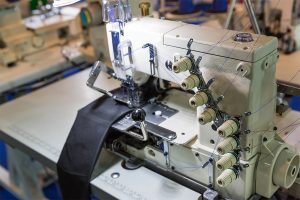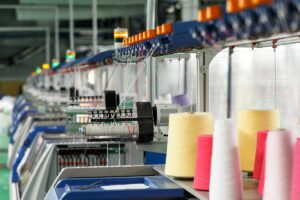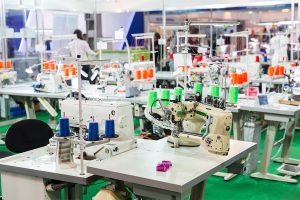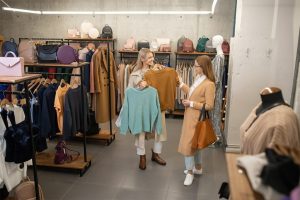It is the process of transfer dyes from the aqueous solution to the fiber surface

The decorative arts are arts or crafts whose object is the design and manufacture of objects that are both beautiful and functional. It includes most of the arts making objects for the interiors of buildings, and interior design, but not usually architecture. Ceramic art, metalwork, furniture, jewellery, fashion, various forms of the textile arts and glassware are major groupings.
Applied arts largely overlaps with decorative arts, and the modern making of applied art is usually called design. The decorative arts are often categorized in distinction to the “fine arts”, namely painting, drawing, photography, and large-scale sculpture, which generally produce objects solely for their aesthetic quality and capacity to stimulate the intellect.
Design Development
- The rayon fabrics wholesaler is available.
- Trends the Current Market in Design
- The Global fabrics distributor is done by company.
Our in-house innovation engine
- Trends the Current Market in Design
- The rayon fabrics wholesaler is available.
- The Global fabrics distributor is done by company.
Manufacture
It is the process of transfer dyes from the aqueous solution to the fiber surface
Fabric Printing
Stitches are the fundamental elements of sewing, knitting and needle lace-making
BENEFITS OF SERVICE
 Antimicrobial technology adds a durable defense barrier on fabric, which helps fight odor-causing bacteria, mold and mildew. This makes a product with antimicrobial fabric stay fresher longer so you can wear it with confidence. This lasting, continual protection against potentially harmful microbes lasts wash after wash.This “permastink” or permanent odor build up in synthetic fabrics is a well-known concern within the apparel industry and the consumers.
Antimicrobial technology adds a durable defense barrier on fabric, which helps fight odor-causing bacteria, mold and mildew. This makes a product with antimicrobial fabric stay fresher longer so you can wear it with confidence. This lasting, continual protection against potentially harmful microbes lasts wash after wash.This “permastink” or permanent odor build up in synthetic fabrics is a well-known concern within the apparel industry and the consumers.
 Antimicrobial fabric stays cleaner for longer and in between washings. If a towel stinks less, you will wash it less because it maintains that “just laundered” feeling. New energy efficient washing practices do not get fabrics as clean. Adding antimicrobial product protection reduces the growth of odor causing microbes that remain on your clothes even after washing.This “permastink” or permanent odor build up in synthetic fabrics is a well-known concern within the apparel industry and the consumers.
Antimicrobial fabric stays cleaner for longer and in between washings. If a towel stinks less, you will wash it less because it maintains that “just laundered” feeling. New energy efficient washing practices do not get fabrics as clean. Adding antimicrobial product protection reduces the growth of odor causing microbes that remain on your clothes even after washing.This “permastink” or permanent odor build up in synthetic fabrics is a well-known concern within the apparel industry and the consumers.
 Sweat is a universal problem. When you sweat, the bacteria on your skin consumes the nutrients in your sweat and breaks it down, producing odor. Antimicrobial fabric inhibits the growth of unpleasant odors before they start on the garments by controlling bacterial growth.Given the propensity of odor buildup in performance wear, as they are often made from synthetic fabricsmany consumers have experienced the need to rewash clothing that did not wash clean and began to smell once the garment was on and warm.
Sweat is a universal problem. When you sweat, the bacteria on your skin consumes the nutrients in your sweat and breaks it down, producing odor. Antimicrobial fabric inhibits the growth of unpleasant odors before they start on the garments by controlling bacterial growth.Given the propensity of odor buildup in performance wear, as they are often made from synthetic fabricsmany consumers have experienced the need to rewash clothing that did not wash clean and began to smell once the garment was on and warm. Bacteria and fungi can degrade textiles in many ways. Repeated washing also negatively affects the lifecycle and speeds up degradation. When laundering a product less because it is made with antimicrobial fabric, you extend the life of the product.
Micro-organisms and odors can have a destructive effect on clothing and other products. Microban® antimicrobial technologies work hard so you don’t have to worry. Contact us today to learn how Microban echnology can provided added value to your products and consumers.
Bacteria and fungi can degrade textiles in many ways. Repeated washing also negatively affects the lifecycle and speeds up degradation. When laundering a product less because it is made with antimicrobial fabric, you extend the life of the product.
Micro-organisms and odors can have a destructive effect on clothing and other products. Microban® antimicrobial technologies work hard so you don’t have to worry. Contact us today to learn how Microban echnology can provided added value to your products and consumers.